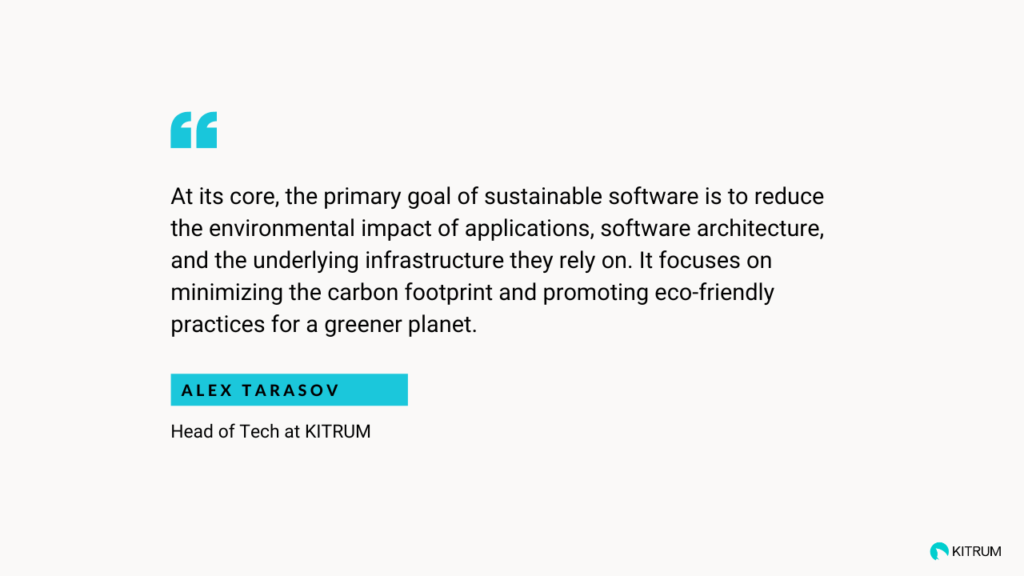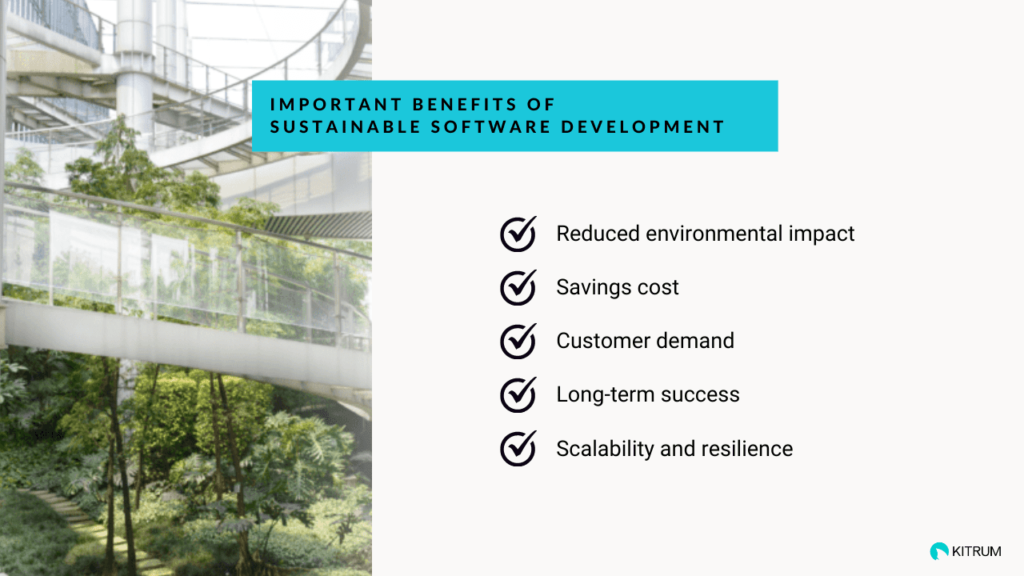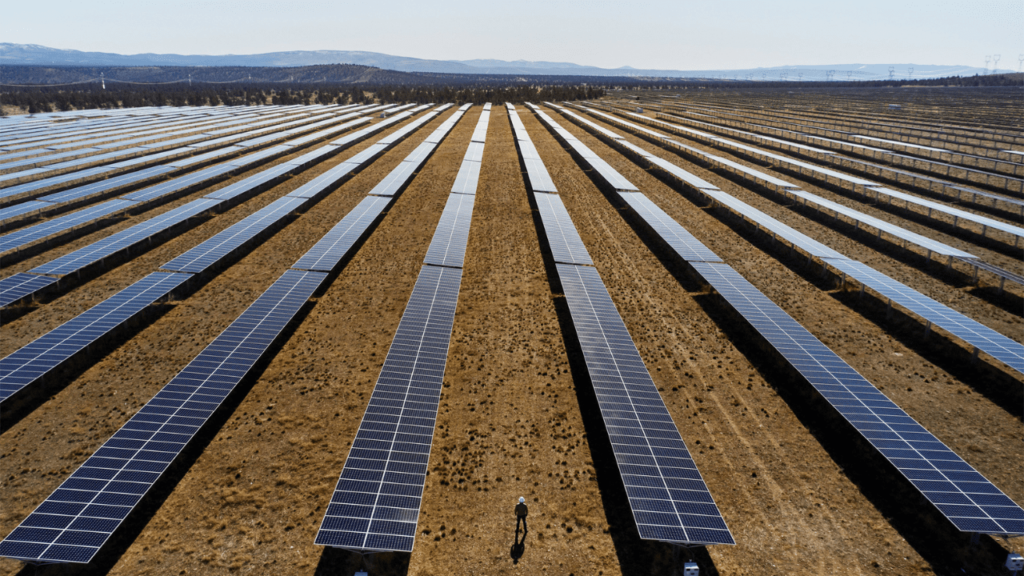Did you know that the past decade has witnessed the 5 hottest years ever recorded? While not immediately evident at first glance, there’s a significant connection between global warming, atmosphere pollution, and software development, and it’s real.
Energy usage, data centers, device manufacturing, and digital consumption are all contributors to the carbon footprint of the tech industry and software development companies. These activities require substantial energy consumption, resulting in greenhouse gas emissions and significant environmental impact.
One meaningful way to care for our planet and future is to embrace Sustainable Software Engineering. It’s a new and exciting approach to software development that combines climate science and software. Not only does it reduce our carbon footprint, but it also makes our software more efficient and cost-effective. Sustainable Software Engineering empowers our developers to find creative solutions that benefit both our businesses and the planet.
What is sustainable software engineering?
But first, let’s understand what this term means. Sustainable Software Engineering (also known as sustainable software development) is an innovative discipline that brings together climate science, software development, hardware design, electricity markets, and data centers. It’s all about creating eco-friendly and energy-efficient software that helps the environment and provides long-term sustainability.

What are the 8 principles of sustainable software engineering?
Some principles of sustainable software engineering form the foundation of environmentally conscious software development, driving us toward a greener and more responsible tech world. Interestingly, these principles are not just for engineers or coders. They can be applied literally by everyone.
Principle 1. Carbon
The rising levels of carbon in the atmosphere have led to climate change-related effects. Carbon harms the atmosphere by acting as a greenhouse gas, trapping heat and causing global warming.
Principle 2. Electricity
Using electricity is one of the major reasons for carbon emissions. But, every software needs electricity to work. So we can reduce electricity usage and the resulting carbon emissions by making software applications more energy-efficient.
Principle 3. Carbon intensity
We should use less energy from fossil fuels, reduce our dependence on conventional renewables, and make the most of unused renewable energy, which is the cheapest option, by allowing renewable plants to sell their excess energy.
Principle 4. Embodied carbon
It advocates moving away from the “planned obsolescence” concept and encourages the construction of applications that can run efficiently on older hardware and perform without constantly requiring hardware upgrades.
Principle 5. Energy proportionality
This approach reduces overall energy consumption and minimizes the environmental footprint of data centers and computing infrastructure, aligning software operations with eco-friendly practices for a more sustainable technology landscape.
Principle 6. Networking
Networking focuses on minimizing data usage and reducing the distance it travels across networks.
Principle 7. Demand shaping
Demand shaping involves creating “carbon-aware” applications that incorporate eco modes, allowing computers to adjust their energy demands based on periods or regions with high availability of renewable electricity.
Principle 8. Optimization
Developers can create more eco-friendly and sustainable software products by keeping an eye on both cost and performance.
What are the benefits of sustainability software?
You might ask, what are the reasons for my company to invest in sustainable software engineering? Here are some compelling reasons why your company should consider investing in sustainable software engineering.

- Reduced environmental impact: First and foremost, sustainable software engineering focuses on creating software solutions with a reduced carbon footprint and minimizing energy consumption. By investing in sustainable software practices, your company can contribute to environmental preservation and demonstrate corporate social responsibility, which customers and stakeholders increasingly value.
- Savings cost: Sustainable software engineering stands for developing energy-efficient and optimized software systems. These solutions help to use less energy and resources, so your company spends less on things like computers and electricity. This means more money stays in your pocket for other important things.
- Customer demand: Consumers are increasingly conscious of their environmental impact and prefer associating with companies that share their values. Investing in sustainable software engineering can differentiate your company, attracting environmentally conscious customers and partners, like Millennials and Gen Z, increasing your income, and improving your brand image.
- Long-term success: Sustainable software is like building a strong foundation for your computer programs. It means they can change and grow with your company, lasting a really long time without needing big and expensive makeovers. So, you save money, plus your software stays useful and up-to-date.
- Scalability and resilience: When you use sustainable software engineering principles, it means your software is designed to grow and adapt as your business expands. Thus, it can handle more work and unexpected problems without slowing down or crashing, keeping everything running smoothly.
If your company strives for long-term success and forward-thinking practices, you need seriously to look at your software engineering strategies.
What tech companies are focusing on sustainability?
In recent years, tech companies have increasingly emphasized sustainability, recognizing the importance of addressing environmental challenges and adopting eco-conscious practices. Giants like Google, Microsoft, and Apple actively invest in renewable energy sources to power their data centers and operations, striving to become carbon neutral. These companies also promote energy-efficient products and adopt circular economy principles to minimize electronic waste.
Microsoft
Microsoft has made significant strides in sustainability by leveraging new digital tools to support its customers in decarbonizing their operations and infrastructure. Their latest initiative, the Microsoft Cloud for Sustainability, offers a comprehensive and automated sustainability management solution for organizations at any stage of their sustainability journey. Through their Climate Innovation Fund, they have invested $471 million to accelerate progress toward carbon, water, and waste management goals.
Microsoft’s commitment to combating climate change extends beyond their own efforts, as they donated $100 million to Breakthrough Energy’s Catalyst initiative, aiming to scale innovative carbon solutions. Microsoft’s dedication to sustainability is paving the way for a greener and more environmentally conscious future.
Google is dedicated to achieving net-zero emissions throughout its operations and value chain by 2030. The company aims to reduce 50% of its combined Scope 1, 2 (market-based), and 3 absolute emissions compared to its 2019 baseline before 2030. To neutralize its remaining emissions, Google plans to invest in nature-based and technology-based carbon removal solutions. Their clean energy goal is equally ambitious, aiming to power their offices and data centers with 24/7 carbon-free energy.
In 2022, Google achieved a milestone, with 64% of its global average energy for data centers and offices coming from carbon-free sources. 38% of Google-owned and -operated data centers, specifically 10 out of 26, have successfully achieved zero-waste to landfill. Most new Google products’ packaging was plastic-free, making up at least 96% of the total.
Apple
Apple is fully dedicated to achieving carbon neutrality for its entire operations by 2030. As of March 2022, 213 of their suppliers, accounting for most direct supplier spending, have committed to using 100% renewable energy for their Apple-related business. Apple has significantly increased its use of clean energy in manufacturing its products, more than doubled in the last year.

Their environmental efforts have resulted in avoiding over 23 million metric tons of emissions across all scopes in the fiscal year 2021, and they have reduced their carbon footprint by an impressive 40% compared to the fiscal year 2015. Apple also funded 10 clean energy projects that support economic growth, social impact, and equity in under-resourced communities worldwide while advancing their carbon neutrality goal.
Consequences of inaction
Investing in sustainable software engineering is not just an option – it’s crucial for the future of our companies and our world. Developers can use innovative algorithms and advanced data center design to create software that dynamically adjusts resource usage based on demand.
How exactly does it help? This approach reduces energy consumption during low-traffic periods, leading to significant cost savings and a smaller carbon footprint.
Failing to adopt sustainable practices might result in the following:
- depletion of natural resources;
- food and water scarcity;
- intense climate change;
- pollution and waste;
If we do not prioritize sustainability today, there is no resilient and harmonious future where technology and innovation coexist with a thriving planet, fostering a legacy of positive change for future generations.







